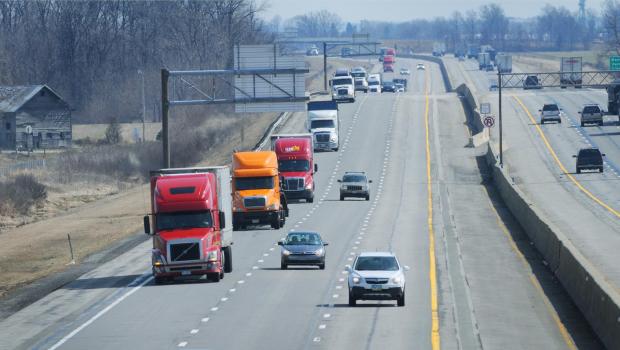What challenges have you encountered while on the road? Did they involve other drivers, changing weather conditions, or rough roadways? In order to avoid accidents and keep your rig running smoothly and on the road, try following these top safety tips.
1. Plan Your Trip
Safe-driving practices start before you even leave on a trip. So look over the route online to get an idea of what potential traffic flow and weather conditions you can expect to encounter. If possible, invest in a trucker’s GPS. These devices are worth their weight in gold when trying to get around unfamiliar areas.
2. Get Plenty of Rest
One of the easiest and best ways to stay safe when driving a semi-truck is to get plenty of rest. It is important to also get rest when you haul a load a long distance. And, when driving, make sure to take the occasional break and allow yourself to get out and stretch. This is a perfect opportunity to check your tires to make sure they stay in good shape.

3. Maintaining Your Vehicle and Trailer
Do a thorough inspection of your truck before you begin driving for the day. Some important areas to pay particular attention to when performing a pre-trip inspection are the tires and brakes. You should also do a walk-around whenever you stop during your drive to make sure everything is still in good condition.
Also Read: Save Money and Time with Proper Preventative Maintenance
4. Remain Aware of Truck Clearances
Monitor the space around your truck while driving. The easiest way to do this is to get into the habit of checking your mirrors constantly while driving. Some areas to remain aware of include the space in front, behind, and both sides of the truck and trailer. Overhead clearance is also important, especially when entering tunnels and going under overpasses.
5. Backing Up
When backing up your truck, especially with an attached trailer, make sure you have an idea of what’s in the area behind your truck, including any obstructions. Get out and take a walk around the back of your truck to make sure you know what’s back there. If necessary, get someone to act as a spotter, especially if you can't see the area you are backing into. Depending on the trailer type you use, your ability to turn can also be affected. Tandem wheels set further toward the rear of the trailer make it more difficult to turn. Some trailers allow you to adjust the tandems. Use these to your advantage if possible when backing up.
6. Blind Spots
Remain aware of your blind spots while driving on the road. The biggest blind spot is directly behind the trailer. Some other areas include directly behind the driver on the left of the truck and to the right of the truck as a vehicle approaches. Having additional mirrors installed can help alleviate some of these blind spots, though you should still use caution and observe all of your mirrors while driving to avoid an accident.
7. Use Proper Safety Equipment When You Break Down
If your truck does break down, make sure to follow a few simple steps to help alert other drivers to your presence on the roadside. First, pull over as far to the right on the roadside as possible to avoid getting too close to traffic. Next, turn on your truck's hazard lights. Then, place road flares or reflective triangles around your truck. Finally, wait in a safe spot until help arrives. And remember to use caution when exiting or entering your truck.